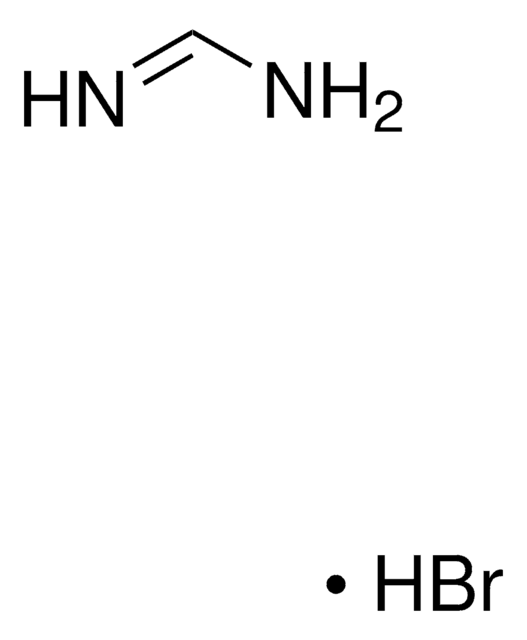915181
Cesium bromide
AnhydroBeads™, 99.999% trace metals basis, (Perovskite grade)
Synonym(s):
Cesium monobromide
About This Item
Recommended Products
product line
AnhydroBeads™
Quality Level
Assay
99.999% trace metals basis
form
solid
particle size
-10 mesh
mp
636 °C (lit.)
density
4.44 g/mL at 25 °C (lit.)
SMILES string
[Br-].[Cs+]
InChI
1S/BrH.Cs/h1H;/q;+1/p-1
InChI key
LYQFWZFBNBDLEO-UHFFFAOYSA-M
Looking for similar products? Visit Product Comparison Guide
Application
Packaging
Legal Information
Signal Word
Warning
Hazard Statements
Precautionary Statements
Hazard Classifications
Acute Tox. 4 Oral - Aquatic Acute 1 - Repr. 2
Storage Class Code
11 - Combustible Solids
WGK
WGK 3
Flash Point(F)
Not applicable
Flash Point(C)
Not applicable
Choose from one of the most recent versions:
Certificates of Analysis (COA)
Sorry, we don't have COAs for this product available online at this time.
If you need assistance, please contact Customer Support.
Already Own This Product?
Find documentation for the products that you have recently purchased in the Document Library.
Articles
To achieve net-zero emissions by 2050, renewable power contributions must triple. Photovoltaic stations provide vital utility power, achieved primarily through third- and fourth-generation technology. Promising trends include recycling and revolutionary, ultra-lightweight, flexible, and printable solar cells.
Our team of scientists has experience in all areas of research including Life Science, Material Science, Chemical Synthesis, Chromatography, Analytical and many others.
Contact Technical Service






